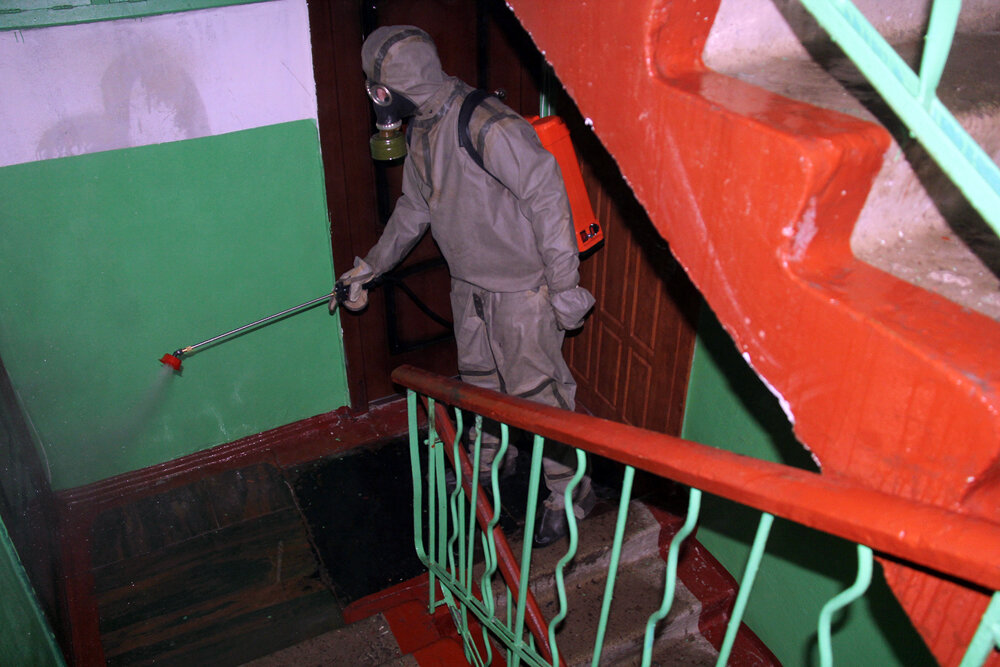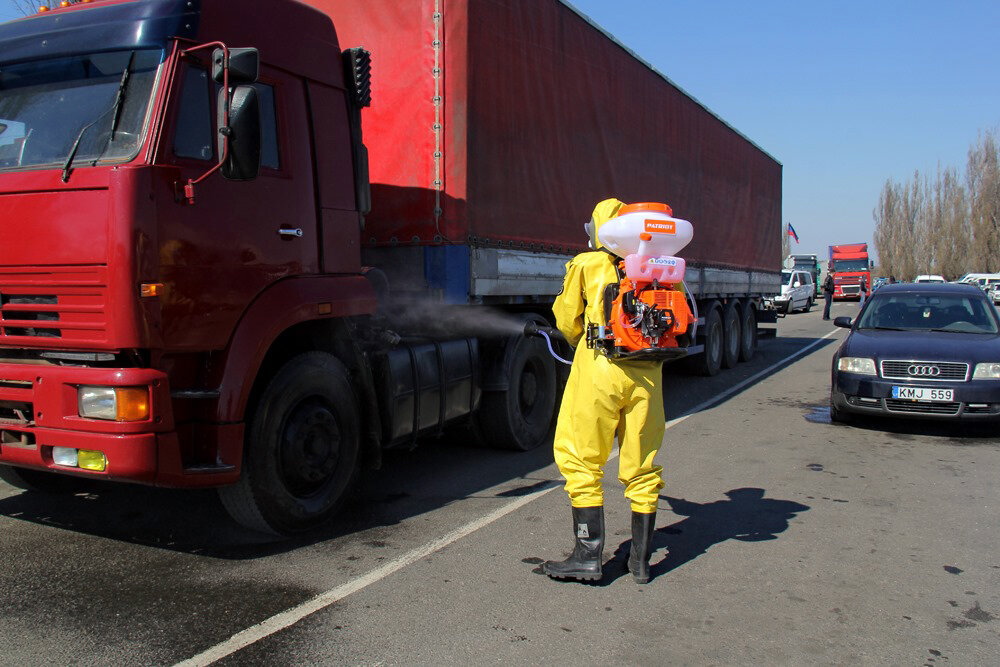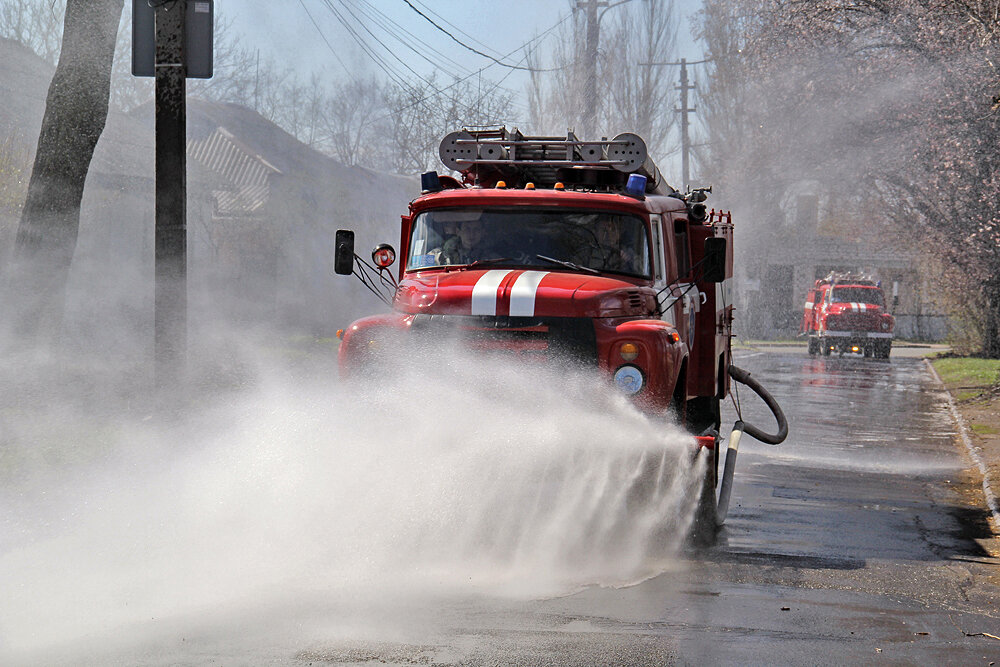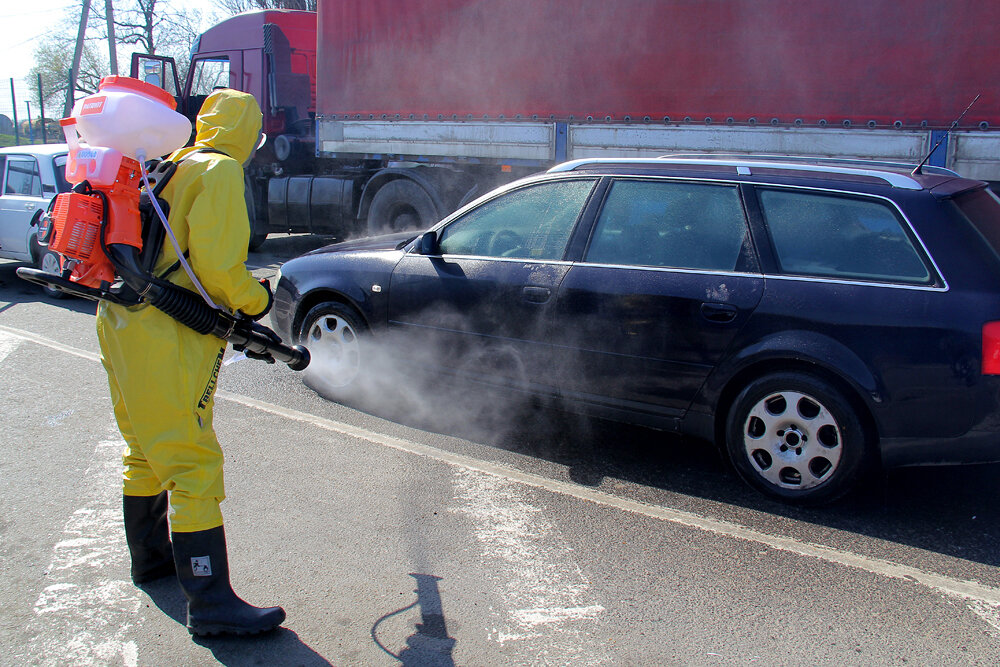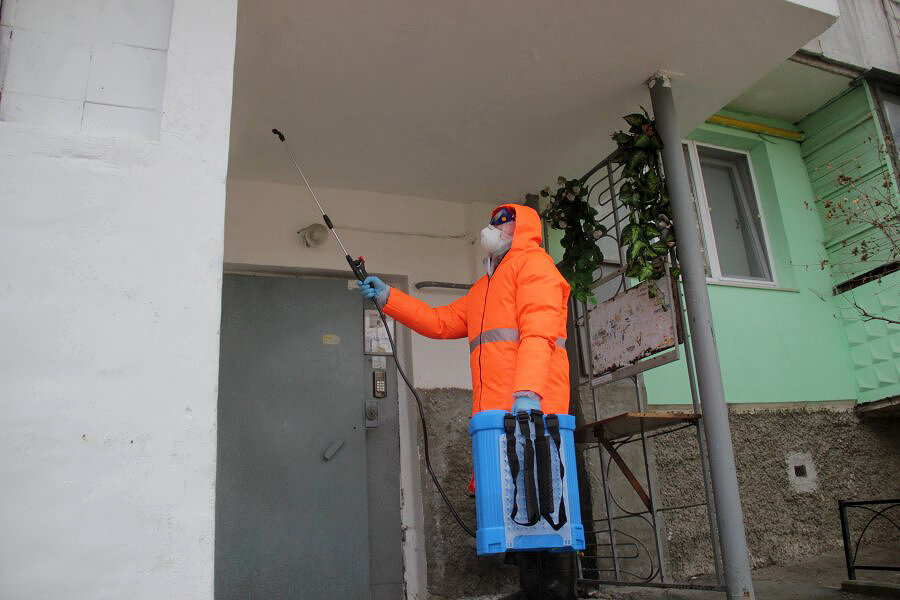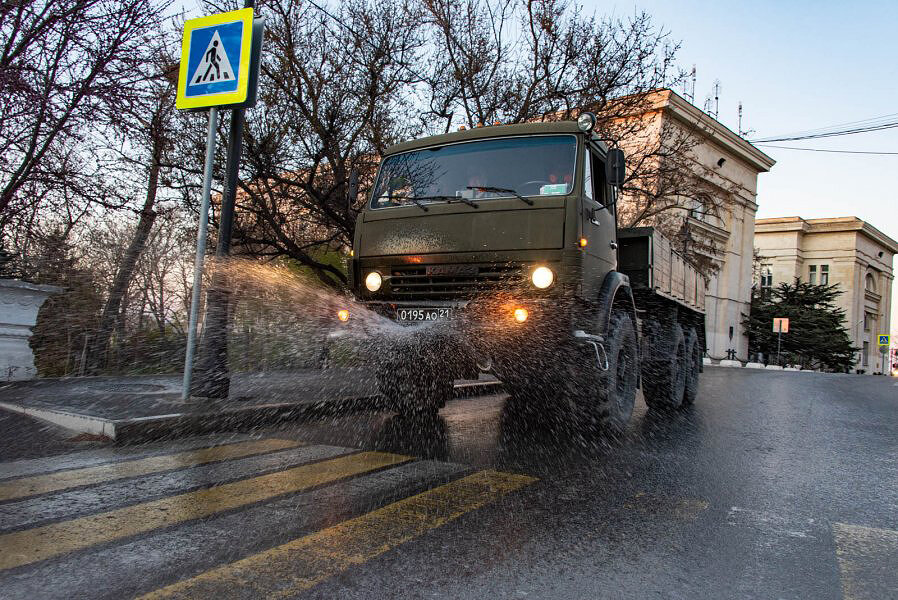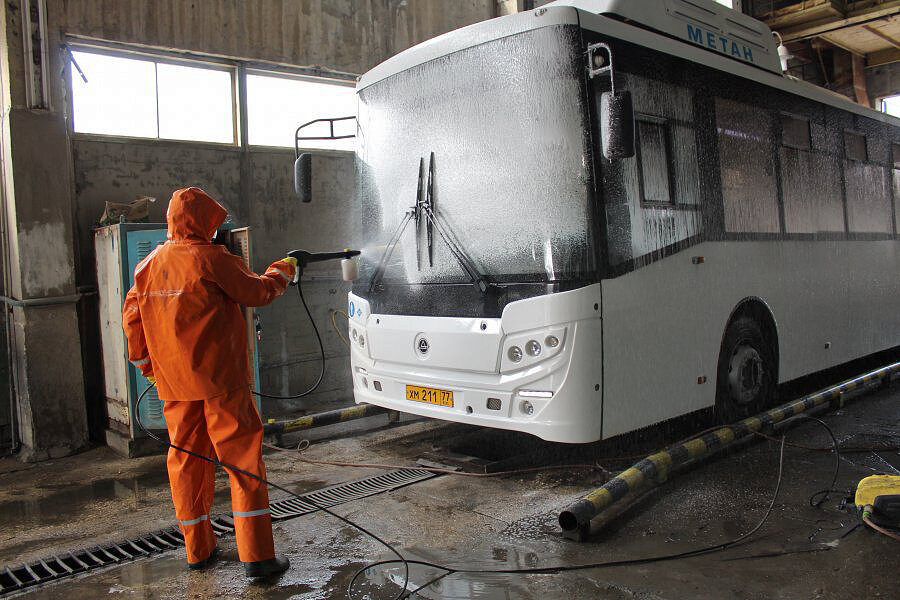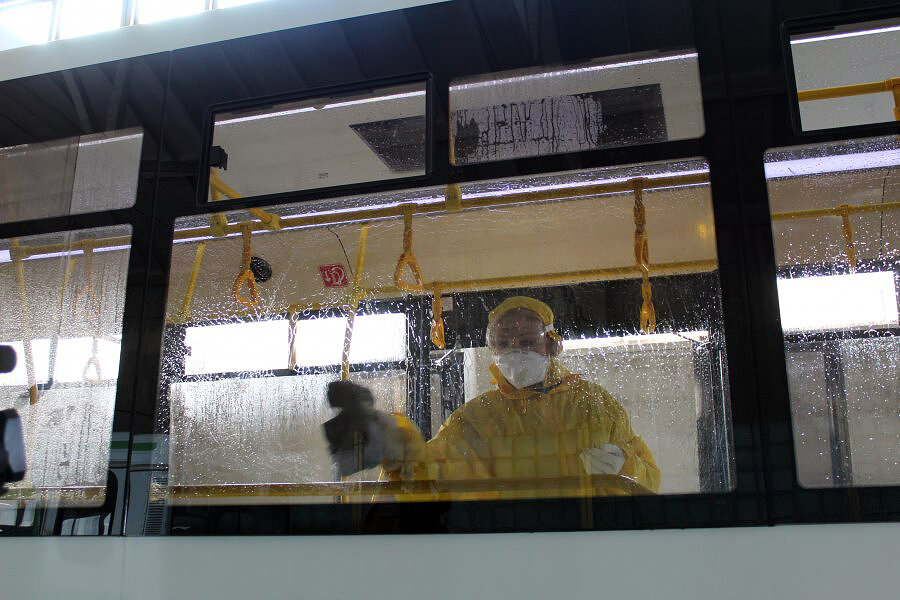As COVID-19 paralyzes even the most advanced economies, the war-torn Donbas and Russian-occupied Crimea are facing the same challenges — only with an already depressed economy.
After its illegal annexation by Russia in 2014, Crimea remains in limbo — an unrecognized, isolated peninsula with a dearth of investment and no direct flights from other countries. It is also hit by the international sanctions imposed on Russia for its land grab.
In the Donbas, Russia’s six-year war has taken 13,000 lives and left the economy in ruins. Although the fighting has lessened in intensity, the region has yet to recover.
Both Ukrainian territories now depend on Russia’s help to fight the novel coronavirus. Moscow is exploiting the situation to argue for sanctions to be lifted. In meetings held by video link, the Kremlin asked the United Nations and the G20 nations to impose a moratorium on sanctions so it can fight COVID-19. They were not successful.
Meanwhile, Russia itself is struggling to fight COVID-19. As of April 12, it already has 15,770 cases and 130 deaths. This has raised concerns that Crimea and Donbas could face a humanitarian disaster when the virus strikes — if it hasn’t already.
On March 25, the United Nations took steps to help the Donbas. It announced a plan to raise $33 million for people living on both sides of the contact line to fight COVID-19. The money will go toward health care, food and support targeted to the elderly and people with disabilities. There is no humanitarian aid plan for Crimea.
But the challenge will be understanding the true scope of COVID-19 in these regions.
Crimea has officially confirmed 31 coronavirus cases, with two more in the city of Sevastopol, the Russia-appointed authorities there said on April 12. Kremlin-backed authorities in Donetsk Oblast said they have identified 18 coronavirus cases as of April 11. In Luhansk, the de facto officials have reported about 6 cases of COVID-19 on April 8.
But the real numbers are unknown.
In Russian-occupied Donbas, 150 people were hospitalized with suspected pneumonia, a common COVID-19 complication, Ukraine’s ombudsman to the occupied territories, Lyudmyla Denisova, said on March 27. It is impossible to diagnose COVID-19 there because there are no tests for coronavirus in hospitals, she added.
But, on March 20, local television broadcast a story showing polymerase chain reaction (PCR) laboratory tests, the most accurate way to diagnose COVID-19, that had arrived in Donetsk from Russia. Their quantity was not mentioned.
The Kyiv Post spoke to residents of Crimea, Donetsk Oblast and Luhansk Oblast to find out how the COVID-19 situation looks on the ground.
All sources requested and were granted anonymity because of their fear of persecution from the Russian-backed authorities for speaking to Ukrainian journalists.
‘People fear war more than coronavirus’
The shelling is loud on the front line in the Donbas — and the war worries people more than the coronavirus, a young mother from Donetsk told the Kyiv Post by phone.
“Here the vast majority of people believe that the problem (of coronavirus) is exaggerated,” she said. “Maybe that is because the people here went through the war, the shooting.”
That is why, she thinks, people in the war zone don’t wear masks or gloves and are reluctant to protect themselves.
“No one wears masks. Maybe 5% of all the people present in the supermarket when I was there. I was the only one of them wearing gloves,” she added. However, the supermarket staff did wear medical masks, she said.
An elderly Luhansk woman told the Kyiv Post that people in her city do not take the quarantine seriously.
“Before my friend sewed masks for us, my husband wore a dust mask to work. His colleagues made fun of him because they saw no point in wearing a mask,” she said. “Drivers of public transport do not wear medical masks either.”
“But to be honest, it is impossible to buy them. You will find no masks in the pharmacies. Local ateliers tailor the masks from fabric. An acquaintance of mine bought one for 75 rubles ($1),” she said, meaning that the price was high.
Both Donetsk and Luhansk residents said that there is a shortage of sanitizer in the area.
“My husband uses moonshine to sanitize his hands,” the Luhansk resident said.
“I made a sanitizer myself. I pour ethyl alcohol into a perfume bottle and spray my hands,” a Donetsk resident told the Kyiv Post.
In Crimea, medical masks are available online and in supermarkets, while sanitizers are sold in pharmacies, according to a resident of Sevastopol.
Lockdown for elderly
According to the World Health Organization, COVID-19 is most dangerous for people with pre-existing medical conditions and for the elderly.
That is bad news for the occupied Donbas, which is heavily populated with older people. Many of them stayed in the conflict zone when the war started in 2014, despite heavy shelling because they had nowhere to go or physically couldn’t relocate.
Now, the lives of these people are at great risk
On April 2, the unrecognized Donetsk authorities issued a decree requiring people older than 65 to self-isolate at home until April 17. They are only allowed to go out for groceries or to walk a pet — and no further than 100 meters from home.
“The population is old here and public transport is often full of pensioners,” a young mom from Donetsk told the Kyiv Post. “Signs have appeared on buses saying that free travel for senior citizens is canceled for the quarantine period. And it worked. Pensioners stopped using public transport en masse.”
“However, they still do not obey the rules,” she added. “Instead of traveling somewhere they now walk there. They go to the markets.”
The same rules for older people are enforced in Crimea and the Russian-occupied part of Luhansk Oblast. Free public transportation for seniors was canceled there as well.
Mass gatherings banned
Mass gatherings of people are either completely banned, like in Donetsk, or restricted to a certain number of participants.
The Luhansk occupation authorities still allow gatherings of less than 50 people, but forbade children from taking part. Crimea imposed a ban on mass gatherings on March 17, a day before the sixth anniversary of the Russian annexation, which the unrecognized authorities typically celebrate loudly and publicly.
For this reason, the celebration was far more modest than usual, a Sevastopol resident told the Kyiv Post. “March 18 is a bank holiday. Normally all big cities have festivals and concerts, but this time there was no celebration like that,” she said.
However, Russian President Vladimir Putin paid a visit to Crimea on March 18. Events were organized for him despite the ban.
In Donetsk and Luhansk oblasts, as well as in Crimea, schools are now closed. However, the education process continues remotely using online platforms.
Measures to prevent the spread of coronavirus coincided with the scheduled spring break. It started in mid-March and lasted for a week. After the break ended, distance learning began in the majority of Crimean schools. It includes televised classes and homework. Children were asked to do homework and then send it back to the teacher via a messenger app.
On April 2, Ukrainian President Volodymyr Zelensky’s office announced that televised classes led by school teachers will be available for the Kremlin-occupied territories.
In Donetsk, restaurants and cafes are not allowed to work after 6 p.m. In Crimea, they had to shut down completely. They are only allowed to prepare food for delivery. In Luhansk, no restrictions have been imposed.
Catering firms that prepare lunches for the employees of factories and state enterprises are allowed to keep working as usual in Donetsk. So far, restrictions have not touched enterprises that still operate in Kremlin-occupied Donbas. All of them continue to function as usual.
However, some of their employees were asked to sew masks for themselves, according to locals.
The DonetskStal metallurgical plant published photographs of its staff wearing medical masks and said that they strictly provide their staff with individual protection means.
“No one here will shut enterprises down for quarantine — especially companies doing trade — because if they do, there will be no budget revenues,” said a resident of Donetsk. “This ‘republic’ will just fall apart. And I doubt that Russia, given the situation in the world and the economic downturn, will help this particular ‘republic’ to somehow survive there.”
Travel
Coronavirus has significantly affected one aspect of life: entry checkpoints and borders with Ukrainian government-controlled territory are now closed. To cross them, a person needs to explain the urgency of the trip and receive special approval from Ukraine’s authorities.
However, travel between Russia and Crimea is not halted. Airplanes still fly from Moscow to Simferopol. In the occupied areas of Donbas, the border with Russia is not closed either. However, passenger transportation to and from Russia on buses and taxis stopped on April 10, according to an April 8 decree of the self-proclaimed local authorities. However, there was an exception in the decree: People traveling to receive Russian passports were still allowed to enter Russia on public transport. But this exception will be canceled on April 13.
Even those vehicles that can enter the Donbas are being disinfected, according to the photographs published by so-called Ministry of Emergency Situations of Donetsk.
However, some roads are closed due to fear of COVID-19 spreading. Two cities in the Luhansk region, Krasnyi Luch and Antratsyt, have lived under total lockdown since early April after three COVID-19 cases were confirmed there.
And the occupied Donbas enforces the rule that any person who returns from abroad must self-isolate at home for 14 days.
In Sevastopol, vacationers were locked in a hotel called Aquamarine on March 27 after doctors discovered that one of the guests had contracted COVID-19. The lockdown was scheduled to last until April 7, and the guests were asked to pay for their forcibly prolonged vacation, according to the local media. When they refused, the hotel’s management turned off the heating and power.
On March 27, the Russia-appointed Crimean authorities banned hotels from renting out rooms until June 1.
CORONAVIRUS IN UKRAINE: WHAT YOU NEED TO KNOW
- As of April 12: 83 people have died from COVID-19 in Ukraine; 89 people have recovered.
- As of April 11, 6 Ukrainians have died from the novel coronavirus abroad; 19 recovered. 172 are currently undergoing treatment abroad.
- 2,777 confirmed cases of COVID-19 in Ukraine as of early April 12. The first case was identified on March 3.
- Ukraine has extended its quarantine measures until April 24.
- Infographic of quarantine measures in place until April 24.
- The measures shuttered most everything but hospitals, supermarkets, pharmacies, banks, gas stations, and other critical enterprises.
- How the Ukrainian government has been responding: TIMELINE
- Misinformation on coronavirus is going viral in Ukraine.
- Foreign Ministry: What you need to know about traveling to and from Ukraine now
- Why the Kyiv Post isn’t making its coverage free in the times of COVID-19.
- Coronavirus stops the Kyiv Post’s print edition for now.
- Where to buy masks.
Effects on the economy:
- COVID-19 is already inflicting harm on Ukraine’s economy.
- Invisible Threat Lurks Undetected: Top stories from March 27, 2020 PDF edition.
- The former minister of economy says half a million Ukrainians may lose their jobs in the COVID-19 crisis.
